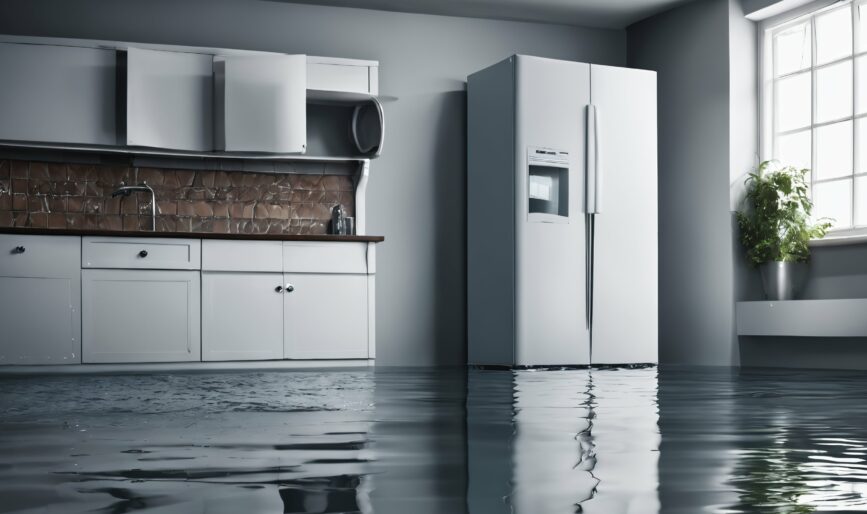Addressing potential water risks in older buildings

Property owners in Canada are well-aware that residential insurance rates have been rising in recent years. What’s worse; these rate hikes are largely due to reasons outside their control, like severe weather from climate change leading to costly floods. One way to ensure a building gets the best insurance rates is to lower its potential water risks.
Weather isn’t the only concern. Industry experts say that the sharp increase in water damage costs caused by aging and inadequate infrastructure actually exceeds the cost of natural weather damage. In addition, outdated buildings and infrastructure are simply ill-equipped to handle and keep up with urban population growth. Insurance companies report that water damage claims account for more than 60 per cent of all insurance claims in Canada, totaling between $4 and $6 billion annually. Furthermore, the costs involved to repair flood and leak damages not only increase insurance rates but can significantly impact capital budgets.
The increasing cost of water, combined with the general lack of tenant mindfulness and the difficulty in effectively monitoring water consumption, are three key factors that significantly affect multi-unit residential and commercial buildings’ Net Operating Income (NOI). Toilets alone account for approximately a third of all indoor water usage in multi-unit residential buildings, and it is estimated that approximately 20 to 25 per cent of toilets in North America experience undetected leaks at any given time.
Unintended forced water consumption results in the loss of billions of dollars in NOI each year. These unit-related risks, along with a building’s aging infrastructure and plumbing, can cause significant damage to multiple units, floors, and other common areas, resulting in higher insurance premiums—or worse, insurance coverage cancellation.
As the demand for upgraded units increases, there are more points in apartment units where water may leak. For example, some residential units now contain dishwashers and ensuite laundry. Clothes washers and dishwashers obtain water from a source hose and then dispense of the water through a drain. Assuming the installations are done according to code with a licensed plumber, there is generally little concern for immediate leaks or floods. However, the tenant must be relied upon to maintain and operate the machines according to specifications, and without due diligence, over time, hoses become compromised and problems occur. Potential leaks are disasters waiting to happen and will increase the chances that your building will be denied insurance premiums in the future.
Building a comprehensive action plan
Since water-related claims are among the most common and expensive in Canada, water risk management is quickly emerging as the primary focus for building owners and shareholders looking to reduce premiums and deductibles to protect and increase the value of their assets. The most effective and proactive way to attack rising premiums and mitigate risk is to have a comprehensive action plan to keep buildings as safe as possible before accidents occur, and claims are made. Although the technology exists to detect, alert, mitigate and prevent such catastrophic events, water risk planning has not yet caught up to fire safety and prevention planning in terms of its level of adoption.
Sustainable and preventative planning with multi-residential building stakeholders, such as building management, security, and concierge and maintenance staff, is a key component to mitigating risk. Working with a water management consulting company to determine which leak detection technology and solutions are right for your building is the best place to start. These experts will assess the health of the property, identify the water risks, and recommend the right services and solutions to help you build a plan to manage your facilities’ water consumption.
Volatile weather on the rise
Leafy faucets, burst pipes, and accidents aside, flooding is Canada’s most costly natural disaster, causing over $1 billion in direct damage to homes, property, and infrastructure per year. Although spring flooding happens everywhere, the western provinces are particularly vulnerable, with evacuations and states of emergency hardly rare occurrences. The B.C. floods of November 2021, in fact, are still considered the most expensive natural disaster in the province’s history, costing the federal government a historic $5 billion.
According to Resources Canada, more floods are happening now than ever before — and they’re getting more dangerous. Flooding can be caused by heavy rainfall, rapid melting of snow, ice jams, coastal storm surges, or strong onshore winds. If floodwater inside a home or building is not dealt with quickly, walls, carpets, flooring, ceilings and personal property will become damaged beyond repair. Flooded zones will become unsafe for human exposure as the dangerous bacteria multiply in the wet environments, leading to mold growth. According to restoration experts, it only takes a few inches of water to create a serious threat to your building, so it’s important to act fast.
WatrTekPro Inc. is an innovative water management consulting company that provides numerous advanced water technologies and services. For a free water analysis and consultation, email Nando Presciutti at [email protected]
The post Addressing potential water risks in older buildings appeared first on REMINET.

